
Dolphins and porpoises are toothed whales of
the order Cetacea, suborder Odontoceti. Like
their distant relatives, baleen whales, toothed
whales are mammals that spend their entire lives
in earth's waters. Most toothed whales are found
in oceans, but some inhabit harbors and rivers.
Odontoceti make up sixty-seven of seventy-seven
cetacean species, in six families: river dolphins
(five species), porpoises (six species), dolphins
(thirty-two species), sperm whales (three species),
white whales (two species), and beaked whales
(eighteen species).
All male toothed whales are larger than females.
Male sperm whales, the largest toothed
whales, are the largest toothed animals in the
world. They grow to seventy-foot lengths and
seventy-five-ton weights. Sperm whales dwarf
all other Odontoceti-Herman Melville's "Moby
Dick" was a male sperm whale. Like all whales,
toothed whales are thought to be descended from
a land animal, believed to have been an ungulate
(hoofed mammal). However, their earliest ancestor
was not the same as that of baleen whales.Why
ancestors of toothed whales entered the oceans,
seventy million years ago, is unknown. It may be
that their return to the oceans was due to the need
for anewfood supply or to escape frompredators.
Physical Characteristics of Odontoceti
The most characteristic physical feature of toothed
whales is teeth that seize prey. Prey range from
small crustaceans for small river dolphins, to squid
and cuttlefish for larger dolphins and sperm
whales, to walruses and seals or other whales for
killer whales. As in all whales, evolution produced
streamlined, fishlike mammals, whose front legs
became flippers. Flipper bones resemble jointed
limbs and some flippers show evidence of digit
bones. External hind limbs are long gone, although
their vestiges are still seen, internalized. Horizontal
tail flukes that propel toothed whales are not
anatomically related to hind limbs. As in baleen
whales, flukes are made of boneless fibrous-elastic
tissue, oriented horizontally, unlike fish tail fins,
which are oriented vertically and differ in composition.
The bodies of whales are surrounded by thick
blubber (fat) layers. This enhances buoyancy, insulates
by preserving body heat, and is a fine energy store. Toothed whales are very fast, some
swimming twenty-five miles per hour for prolonged
periods and forty miles per hour in short
bursts. Specially adapted Odontoceti lungs enable
dolphins to dive to depths of almost onequarter
mile. Larger species dive deeper; for example,
sperm whales dive to over 1.25 miles. This
is because of the presence of waxy spermaceti
around sperm whale nostrils. Cooling the spermaceti-
by filling nasal passages with cold seawater-
raises the whale's density and helps account
for tremendously deep sperm whale dives.
Toothed whales have lungs and breathe air
through a nostril. Nostrils, in blowholes atop the
head, are closed tightly just before dives. Submerged
indefinitely, out-of-breath Odontoceti
would drown, though some can submerge for
over an hour. Part of the ability to remain submerged
is that 30 to 40 percent of oxygen in
Odontoceti bodies is stored in muscle in a usable
form (compared to 10 to 13 percent in humans).
Also helpful to Odontoceti-especially dolphins-
is the ability to move blood bidirectionally in
blood vessels. This minimizes the effects of diving
on the blood pressure and allows blood shunting
to or from different organs as needed.
Dolphins, family Delphinidae, travel in groups
that vary in number from thousands to a few
members. Most dolphins are found in oceans and
seas and have, as special characteristics, beaks of
varied length. Best known are common dolphins
(Delphinus delphis) and bottle-nosed dolphins
(Turisops truncatis). Common dolphins, in legend
and in reality, are great friends of humans. Bottlenosed
dolphins are frequent performers in marine
aquariums. Both species cavort in the open
oceans, leaping with backs arched from waters
near ships. Smaller river dolphins live in Asia and
South America. Examples are near-sighted buffeo
dolphins (Sotalia fluviatilis) and blind Ganges dolphins
(Platanista gangetica), which navigate solely
by echolocation. Other beakless Delphinidae are
large, dangerous killer whales (Orcinus orca) and
intelligent pilot whales (Globocephala malaena).
The seven porpoise species are smaller than
dolphins. They have beakless, rounded heads
and triangular dorsal fins. Porpoises are rarely
seen in open seas. The most plentiful, harbor porpoises
(Phocoena phocoena), inhabit estuaries and
inlets of large rivers. They do not follow ships
or leap like dolphins. There are also three sperm
whale species, the huge sperm whales (Physeter
catadon) and two eight- to ten-foot dwarf or
pygmy Kogia species. All have spermaceti in
their heads. Arctic white whales lack dorsal
fins and spermaceti. Male narwhals (Monodon
monoceros) have spiral horns up to nine feet long,
prized by the people who hunt narwhals for
food. The white whale (Delphinapterus leucas, or
beluga) is also sought for food. Beaked whales,
family Ziphidae, are poorly studied and known
most for toothed beaks and their ability to dive
deeper and stay submerged longer than any other
marine organism.
Special Senses and Odontoceti Intelligence
Odontoceti, especially dolphins, were thought
very intelligent by the ancient Greeks. Current belief
in dolphin intelligence has intensified due to
the ability of captive dolphins, in sea aquariums,
to learn complex tricks and invent games for
themselves and their human keepers. Limited
study of sperm whales suggests intelligence, supported
by the twenty-pound brains of adult
males. Intelligence is extrapolated to other Odontoceti,
most of which have not been studied well.
Almost all species have brains bigger than the
three-pound brains of humans.
Many believe that dolphins and sperm whales
have spoken languages. These are reported as vocalizations,
including calls that keep groups together
and signal danger. Dolphins appear chatty,
almost constantly making variegated whistling
sounds for alarm, sexual arousal, and other emotions.
Moreover, they are very social. They show
great affection and caring for each other and their
calves. In addition, isolated from other dolphins
and human keepers, captive dolphins pine away
and die. Most linguistic authorities see dolphin
and sperm whale intelligence as close to that of
primates, but do not rate their communication as
language.
Odontoceti and baleen whales have small eyes,
lack external ears and noses but have well developed
inner ears, and some river dolphin species
are blind. These characteristics led to proof that
Odontoceti use sound and hearing the way vision
and smell are used by land mammals. In addition
to vocalization (pseudolanguage) they make
echolocation clicks as air moves between nostrils
and nasal passages to the lungs. Clicks are biosonar, as in bats. That is, echolocation is the way
Odontoceti explore the world. Directing clicks
outward toward objects in the environment
causes sound waves to hit the objects.Waves that
bounce off are picked up by the whales and identify
object size, distance, and so on. The great ability
of water to carry and amplify sound is deemed
to be why cetaceans discarded external ears. Operation
of this sensory system has uses in navigation
and predation in murky oceans.
The Life Cycle of Odontoceti
Toothed whales reproduce like other mammals,
but in the water. Adults participate in complex
courtship: swimming close together, caressing,
nuzzling, and rubbing bodies. After copulation,
females carry young for nine to sixteen months,
depending on species. Then, a large, well-developed
calf (occasionally two) emerges underwater,
tail first. Only the reproduction of bottle-nosed
dolphins and sperm whales is well studied. In
both cases, when a calf is born, other females
(aunts) ensure it gets to the surface quickly for a
first breath. They reportedly continue to help the
mother to protect her offspring.
Calves nurse from teats on the mother's belly.
The milk is rich in minerals, protein, and fat, so
calves grow quickly. High maternal affection and
protection of calves is found in bottle-nosed dolphins,
sperm whales, and the other Odontoceti
studied. Calves are weaned in one to two years.
They are adults, capable of reproduction, in five
years. Life spans vary from twenty-five to forty
years. As with other wild animals, not all whales-
actually, only a few-get to grow old.
Odontoceti as an Endangered Species
In the past, uncontrolled whaling for spermaceti,
blubber, and ambergris made sperm whales and
narwhals endangered species. At the beginning of
the twenty-first century, there is little sanctioned
whaling for large Odontoceti, initially due to quotas set by the International Whaling Commission
(IWC). By the early 1990's, most whaling by IWC
nations stopped. These actions and the absence of
clandestine whaling may allow whales to make a
natural comeback. Dolphins, never hunted as
much as baleen and sperm whales, are endangered
because they are trapped and drown in nets
used to catch tuna, a species with which many
dolphin species swim. This has been reduced by
the refusal of tuna canneries to buy tuna from
fleets that do not protect dolphins, an attitude
driven by activist consumer public opinion. A
1972 U.S. Marine Mammal Protection Act-
amended in 1988 and 1992-diminishes exploitation
of dolphins and related mammals.
Dolphins, porpoises, and other toothed whales Facts
Classification:
Kingdom: Animalia
Subkingdom: Bilateria
Phylum: Chordata
Subphylum: Vertebrata
Class: Mammalia
Order: Cetacea (whales)
Suborder: Odontoceti (toothed whales)
Families: Delphinidae (dolphins, seventeen genera);
Monodontidae (white whales, two genera);
Platanistidae (river dolphins, four genera);
Phocoenidae (porpoises, three genera);
Physeteridae (sperm whales, two genera);
Ziphiidae (beaked whales, five genera)
Geographical location: Found in all earth's
oceans, harbors, and some rivers
Habitat: Salt water in oceans, brackish water, or
freshwater, depending on family
Gestational period: Between nine and sixteen
months, depending on species; one large,
well-developed calf (occasionally two) born,
tail first; calves often half as long as mothers
Life span: Estimated twenty-five to forty years,
depending on species
Special anatomy: Toothed mouth; lungs like land
mammals; blow hole; flippers evolved from
front legs; horizontal tail, nasal cavity that produces
echolocation and vocalization
Other popular Animals
Photo Gallery of - Dolphins, porpoises, and other toothed whales
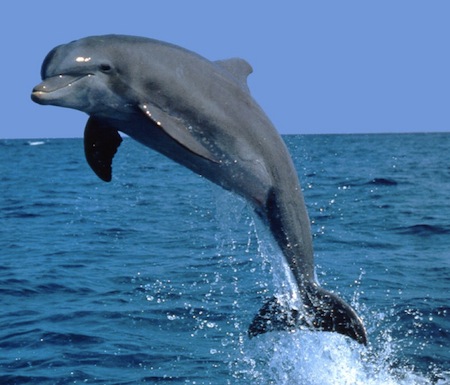
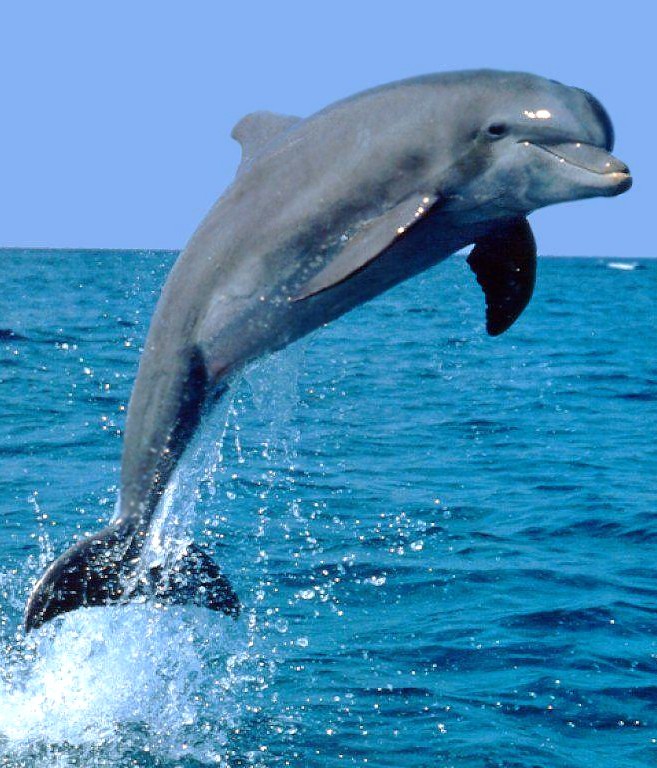
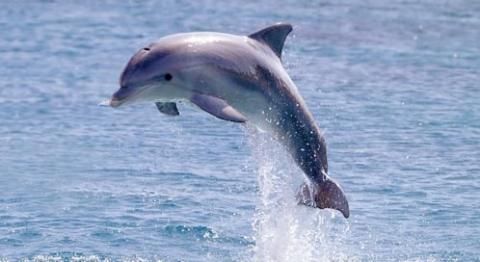
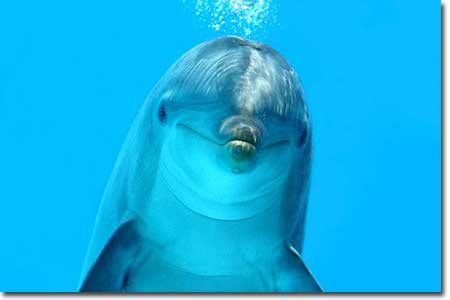

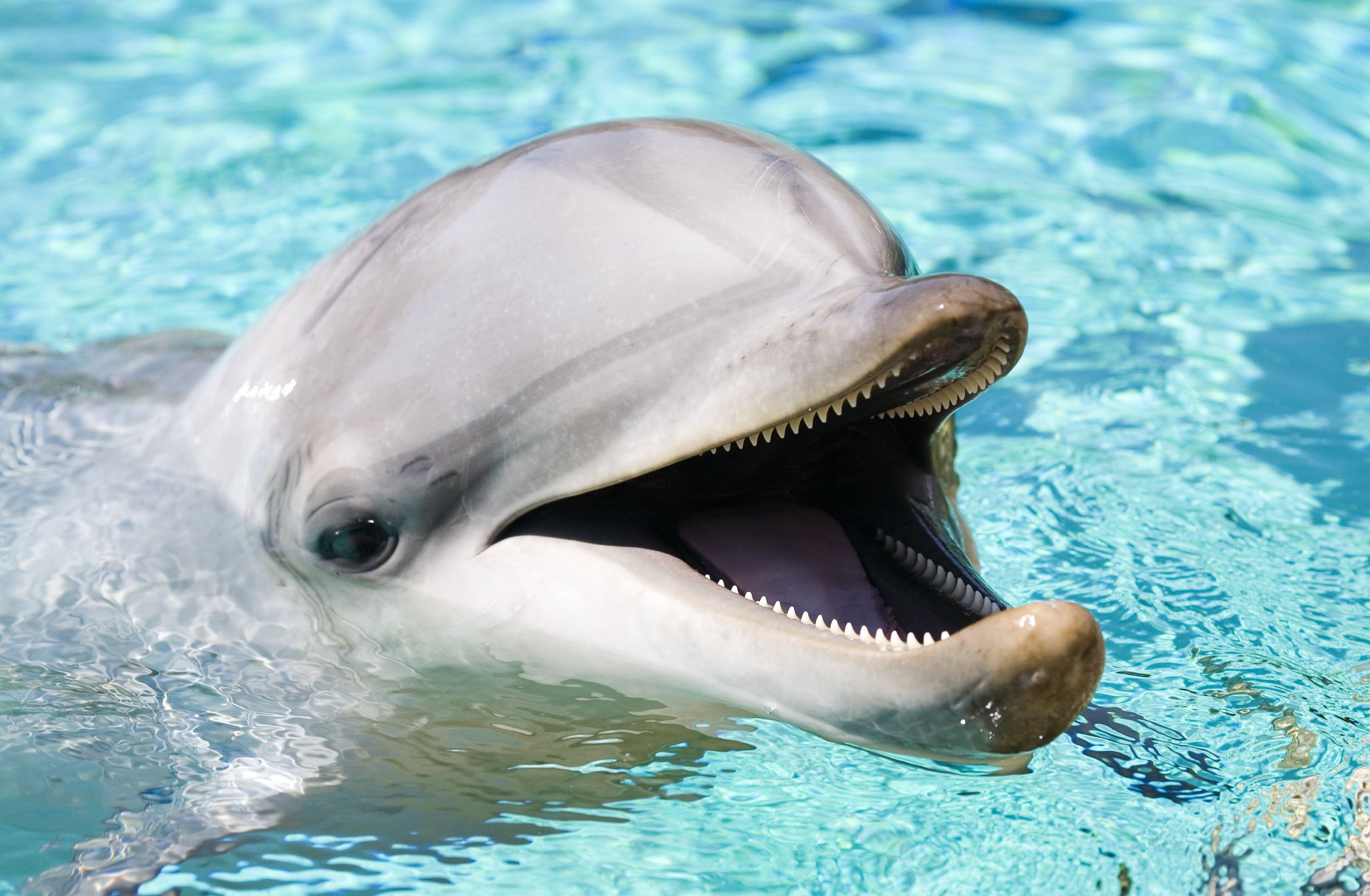

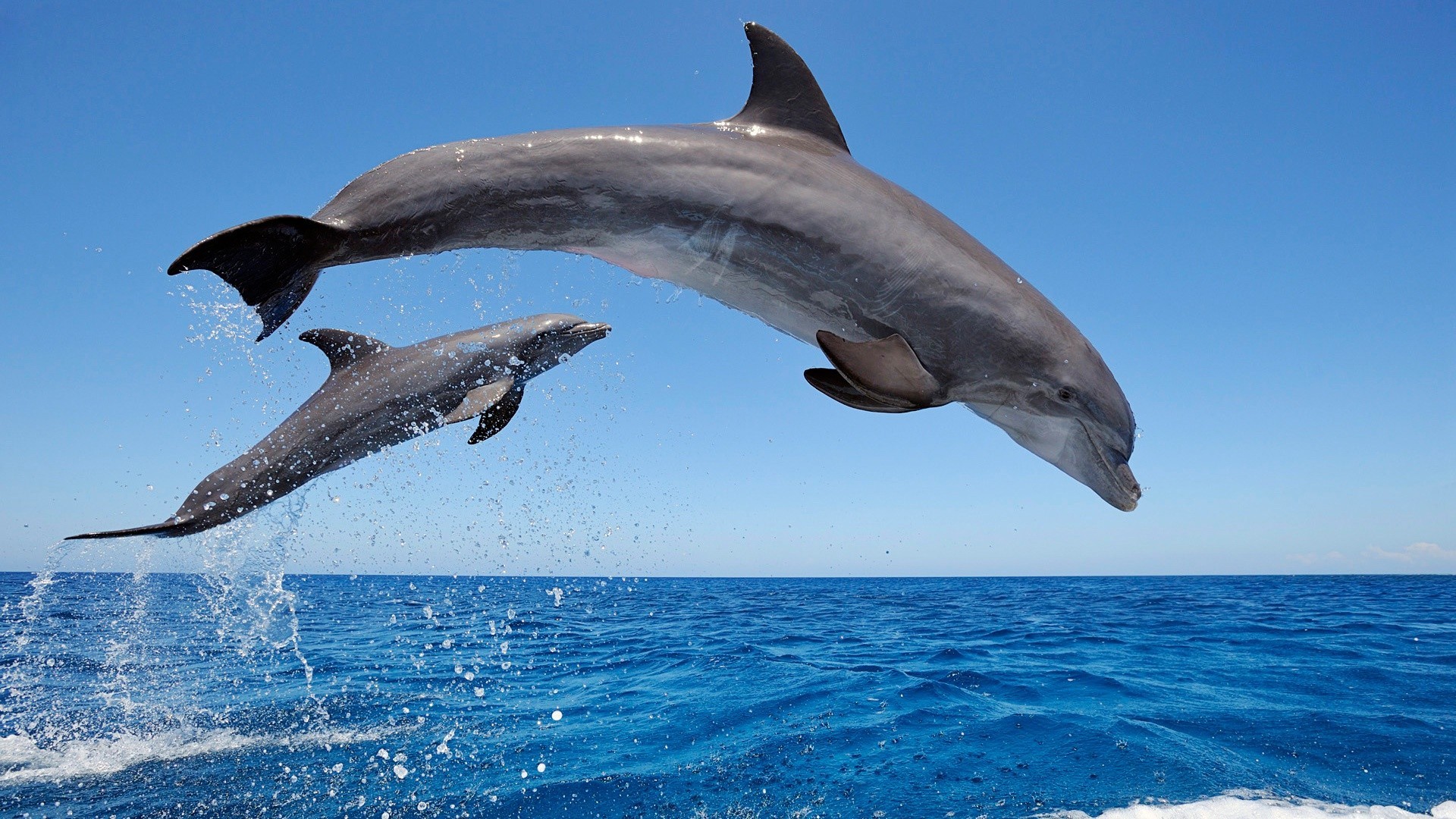
 Animalia Life
Animalia Life